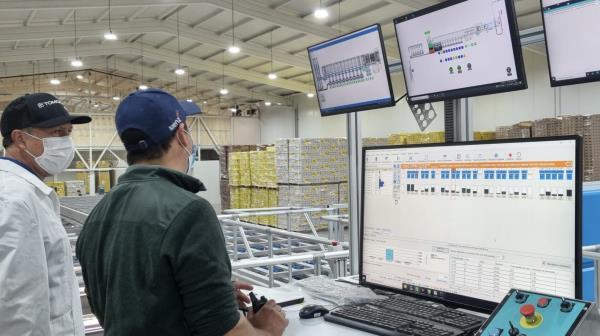Why digital transformation is important for processors and packhouses
VU | TOMRA Food
TOMRA Food, one of the leading providers of sorting, grading, and packing solutions, has been immersed in digital transformation for the past five years. This commitment has given rise to TOMRA's Digital Operations Center, TOMRA Remote Assist for technical support, the TOMRA Visual Assist Augmented Reality tool, and the TOMRA Insight customer portal and data platform. All this serves as the foundation for offering AI and deep learning solutions for TOMRA Food's sorting and grading equipment.
The Digital Operations Center by TOMRA empowers remote equipment monitoring, enabling timely customer feedback in case of unusual behavior. Taking a step further, TOMRA Remote Assist allows TOMRA service engineers to remotely access customer machines, facilitating faster technical support and minimizing downtime. Moreover, TOMRA Visual Assist is an intuitive application that enables remote experts from TOMRA to provide specialized support to customers or service engineers as if they were physically present. This capability facilitates the resolution of diverse and complex issues remotely.
TOMRA Insight, the cloud-based customer portal and data platform, is available through a subscription. It automatically extracts data from sorting machines and presents it in user-friendly graphics. The touchscreen interface on the machine enables real-time monitoring and immediate improvements in line efficiencies and product consistency. In-depth data can be reviewed retrospectively through reports, enabling TOMRA and its customers to collaborate on identifying further efficiency gains, not only on the production line but also in the raw material supply chain. Businesses relying on precise, data-driven insights make more informed operational and strategic decisions compared to those relying solely on experience and intuition.
The efficiency gains achieved through TOMRA's digital solutions may appear subtle individually but accumulate significantly over time. Although confidentiality restrictions prevent disclosing specific details, several examples demonstrate the cumulative savings derived from these advancements.
For instance, a vegetable processing and packaging center faced a high defect level of 42%, primarily due to vegetables not meeting product specifications. Over six working days, approximately 150 million "short" defects were removed from the line. The rejected materials exhibited a good-in-bad ratio of 1.8, translating to 18.75 million saleable objects with a total weight of 1,250 tons discarded. With a market value of €
In another example, a fresh packer leveraged TOMRA Insight to assess the optimal performance of the belt distributor and material infeed. Data collected over two weeks indicated an overload on one side of the belt, resulting in the ejection of approximately nine million objects weighing 315,000 kilograms. TOMRA Insight highlighted a good-in-bad ratio of 10%. To evenly distribute the load, TOMRA monitored ejections and implemented necessary actions. As a result, good-in-bad losses worth €5,600 were reduced in two weeks, equating to an annual increase of €145,600 in profit.
A third example involves a fresh packer monitoring and addressing incoming product quality issues. Initially expecting a defect level of 10%, TOMRA Insight revealed a significantly higher rate of 16%. This information signaled an underlying problem, such as incorrect sorter settings, inadequate cleaning, or technical malfunctions. By identifying and resolving the issue, the packhouse managed to reduce losses of saleable raw materials by over €1,000 during each eight-hour shift.
All this demonstrates the potential of digital transformation to propel processors and packhouses towards a future marked by heightened efficiency, and this future is already underway. What businesses may initially perceive as a welcomed productivity boost will soon become indispensable for maintaining competitiveness in the long run.





